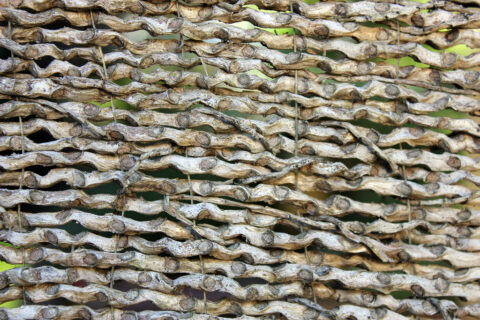Weave Back Better: Investing in Network Weaving as Part of Core Infrastructure
September 13, 2021 2 Comments
Photo by Sharon AFS, shared under provisions of Creative Commons Attribution License 2.0,
I was recently in conversation about the creation of a systems change programmatic offering for funders and nonprofit leaders, and as the discussion turned to the “once in a generation” billions of dollars investment from the US federal government into states and towns, a thought occurred more clearly. Part of “building back better” is weaving back better, connecting and reconnecting the social and cultural fabric of places and communities. This work could fall to official and unofficial “network weavers,” in places that are so inclined, and perhaps there is a need to make this work more official, visible and well supported/compensated.
At a time when many are disengaged from work because of disenchantment, uncertainty and burnout, what could be more engaging than being paid to build trust, facilitate communication and learning, and weave more functional, equitable, resilient and democratic structures of all kinds? A Civic Weaving Corps (CWC)!!!
A few years ago I worked with a place-based multi-organizational collaborative initiative in Massachusetts with a focus on health and fitness. What they recognized is that there was not nearly enough interstitial tissue between organizations and agencies, so that beneficiaries of the system were dropping through gaps or confused about how to navigate. Relying on existing staff to do this was not realistic (except for the energetic few who then risked burnout, or not doing their “day job” well). The same came up in a national education network, where school coaches were discovered to be playing a crucial weaving role between schools within and across regions. This, however, was not what they were formally paid to do, and so it was the first thing to go when people got pressed.
So what if part of Build Back Better lifted up the strong suggestion that cities, towns, states and regions take seriously the importance of weaving activity, and officially supported the creation of network weaver positions (called that or something else contextually meaningful)? Isn’t this the time? What if we really took this opportunity to promote relational stewardship at different scales as being central to ensuring long-term human thriving? While there is some risk to institutionalizing anything, this seems to be worth doing so that it becomes more of a habit and value in systems. And certainly institutionalizing network weaving behaviors in many more positions might help to create the regenerative flows and resilient structures needed for a just and sustainable future.
There could be many models for this. One with which I am intimately familiar is the Food Solutions New England Racial Equity Ambassador Program. This team of passionate and skillful weavers takes the FSNE Vision and Values and its commitment to racial equity in food and related systems to communities across the region. They work together to identify and make connections with new and diverse partners, organizations, and individuals; to create a space for more racially diverse leadership and mentorship opportunities for equity in the food system; and to ensure more connectivity between community efforts, the broader regional food system, and a racial equity agenda.
What do you think? Where is this happening already? How might we advance this as a cause collectively?
2 Comments
Really appreciate this piece Mr. Ogden. There is a growing throng of believers in the power of networks to help us restore bridges over our relational chasms. David Ehrlichman just released his new body of work called “Impact Networks”. I would encourage folks interested in the potential laid out here to check it out. Also see newnetworkleader.org to find out more about Jane Wei-Skillern’s research in this arena. You might also enjoy the SSIR series “The most impactful leaders you have never heard of”.
Thank you for holding up this reminder and call for all of us to lead through our complex and wicked problems through relationships that bring us together and bring us to good. Marty Kooistra
Thanks, Marty. I actually know David and Jane well and contributed to both the book and the SSIR series. I very much appreciate their leadership and partnership. I also look to Dr. Sally Goerner as a key teacher and partner in this work, who uplifts the importance of networks as energy systems that drive change through pressure and flow. You can check out more here – https://www.circularconversations.com/conversations/follow-energy-patterns-to-build-healthy-systems. And then there is always the network weaving maven herself, June Holley, as well as Harold Jarche of Life in Perpetual Beta. The teachers are truly everywhere.
Best,
Curtis